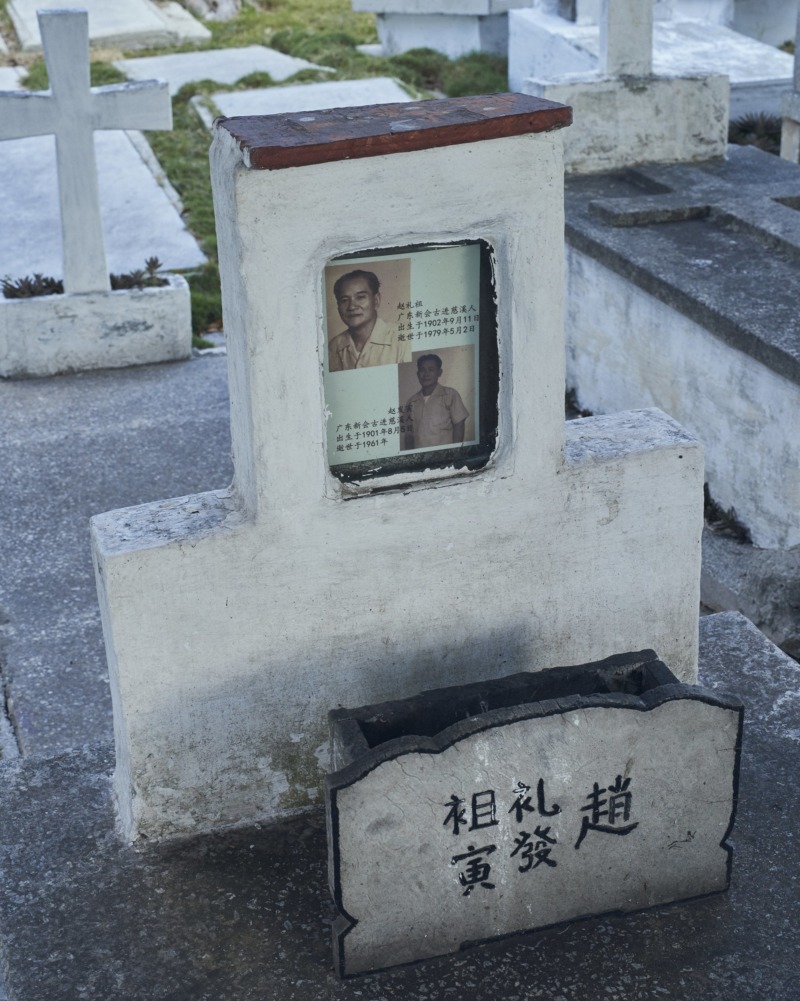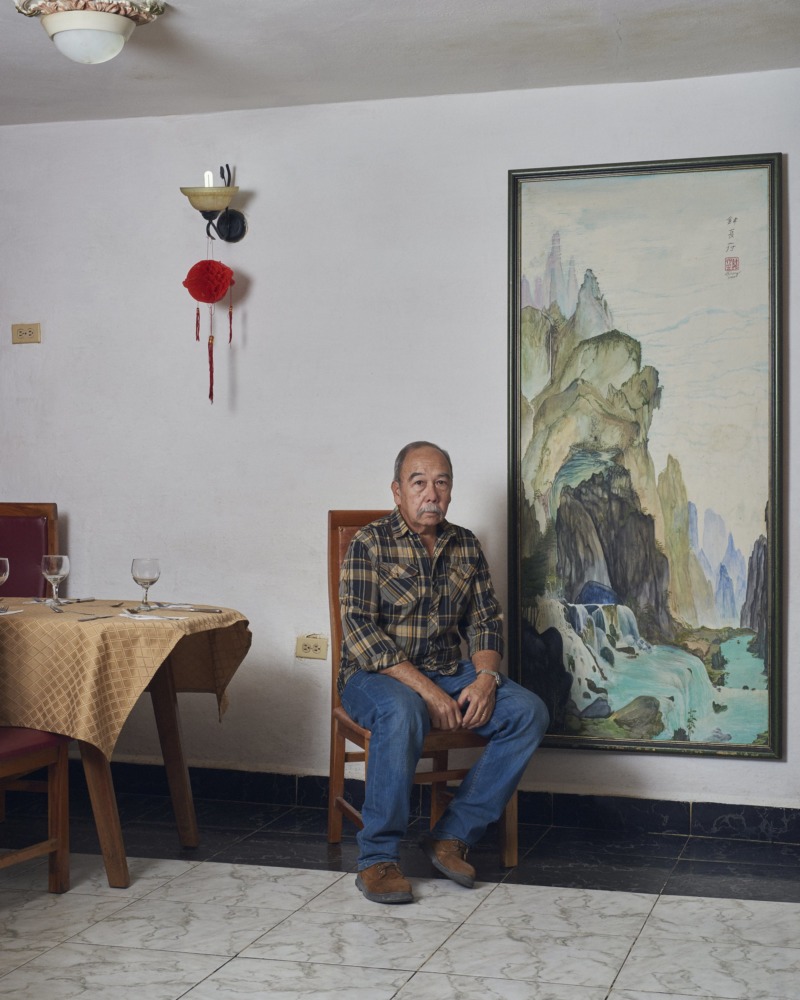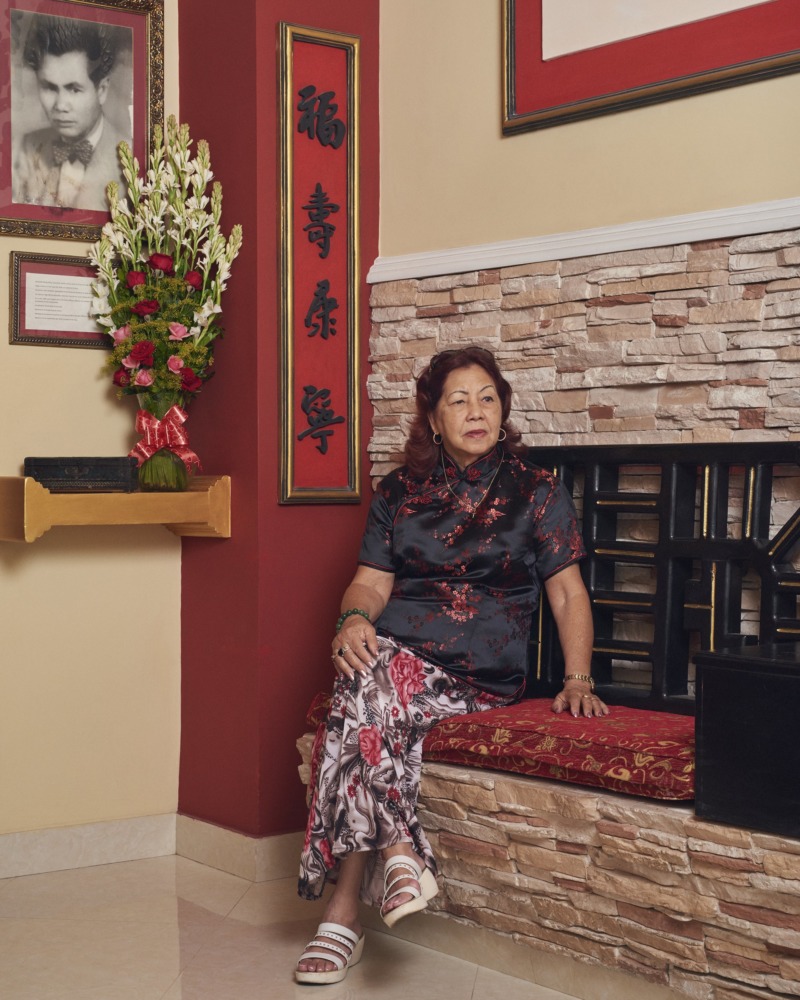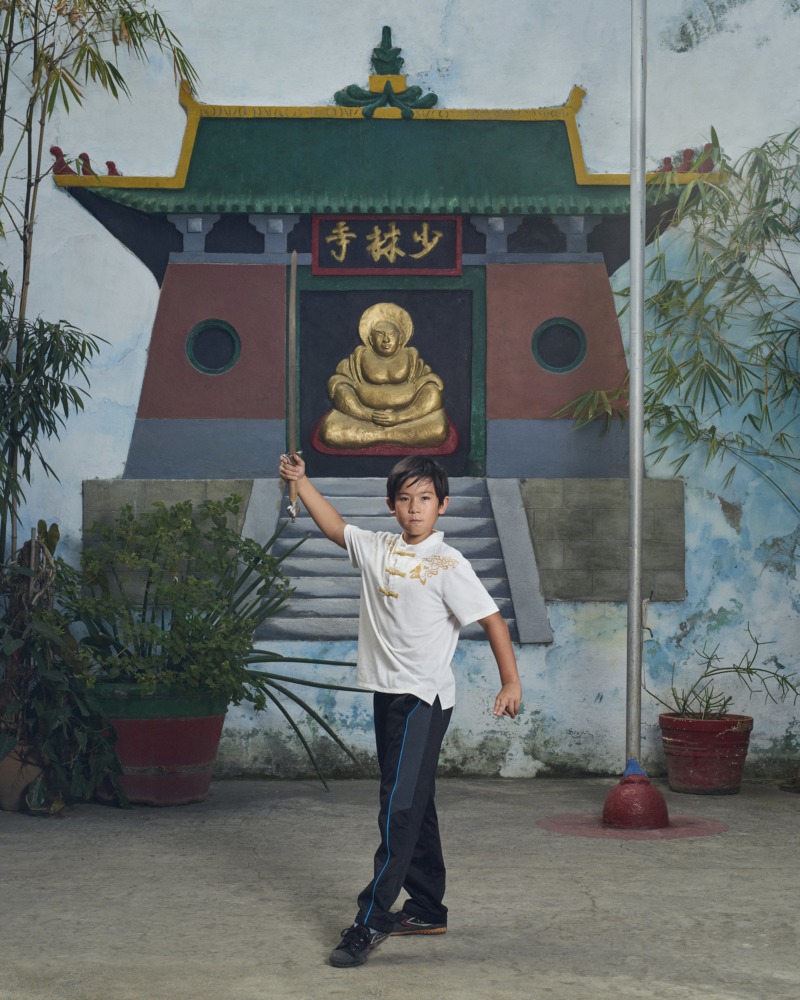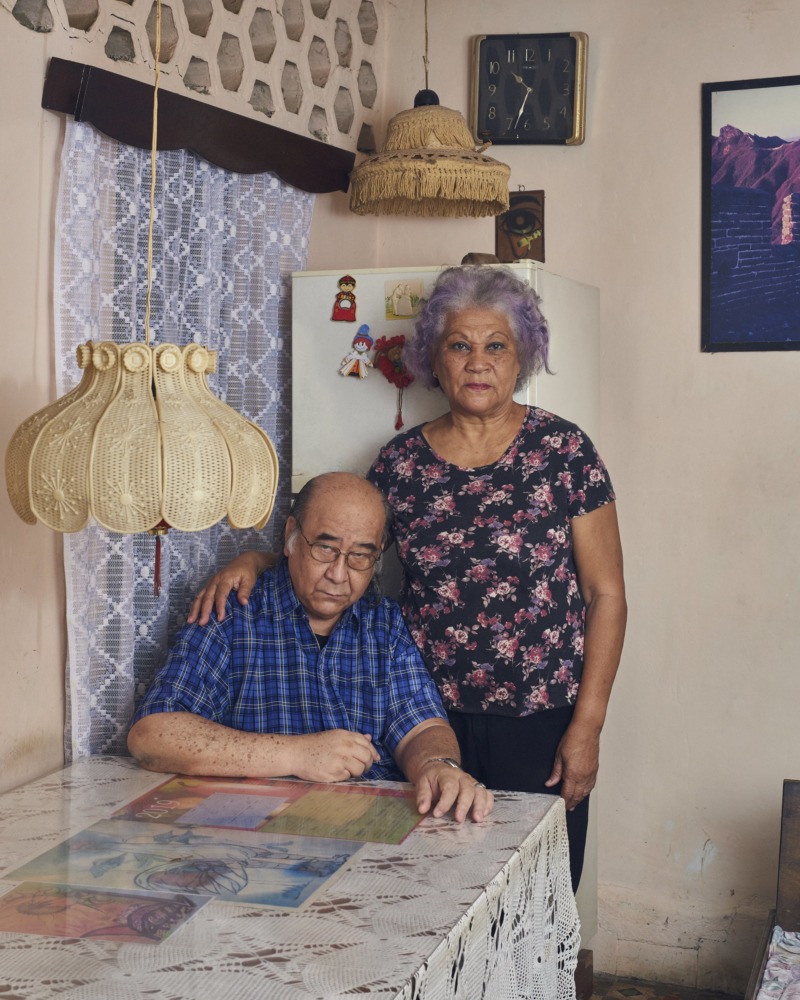Interview – Sean Alexander Geraghty
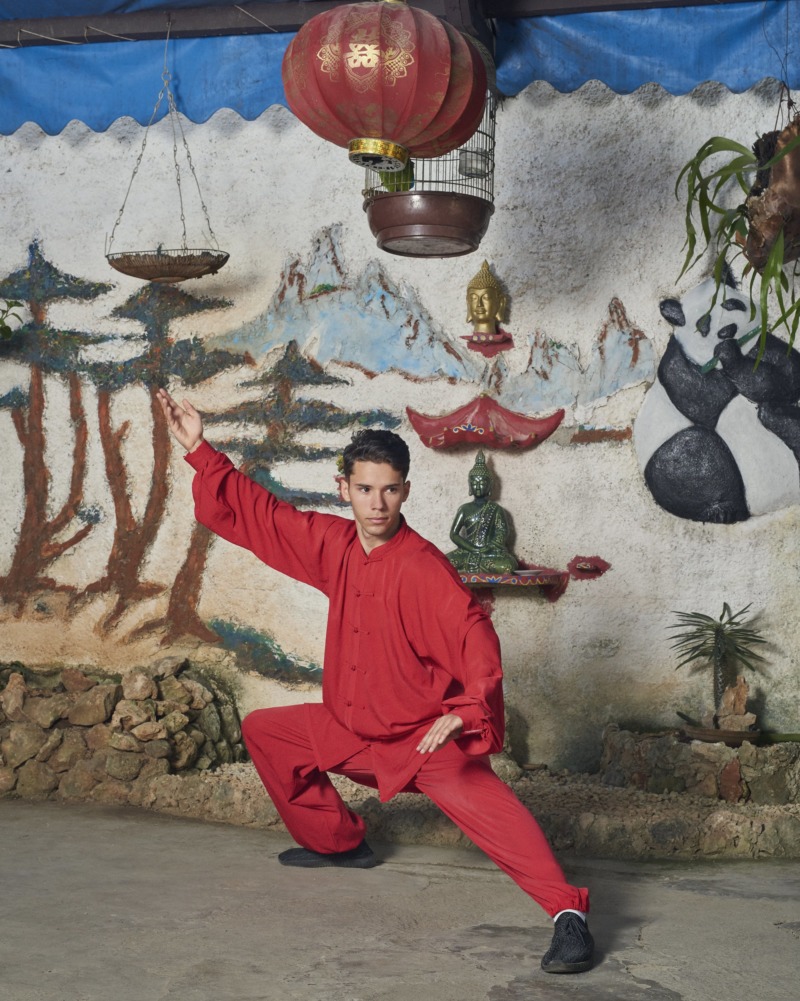
While Sean Alexander Geraghty is better known for his fashion, advertising, and editorial photography, he has always held a desire to investigate human issues. Early in his career he found himself working with the Red Cross in his hometown of Nice, documenting the city’s rough sleepers during the cold winters. Currently, he’s photographing the withering Chinese-Cuban community of Barrio Chino, Havana’s chinatown and once amongst the largest in Latin America.
As Geraghty reminds, the precipitous drop of Cuba from the stage of world history and its current state of isolation is only a recent phenomenon, a product of the United States’ almost total embargo of the nation which has held steady since 1960. Prior to this, the island was the site of a vast sugar cane industry and following the abolishment of slavery, mass migration of indentured labourers – many of them Chinese.
Barrio Chino is Geraghty’s investigation of the cultural and human legacy of this movement. Through his specific focus on this now-threatened neighbourhood, he draws out questions that post-colonial communities face all over the world: what does it mean to be a diaspora? How do people relate to nations they’ve never visited? How do they deal with stereotypes? And what to do with your culture?
Geraghty is in the process of publishing this project and plans to show a number of exhibitions in Cuba for the benefit of the people. I spoke to Geraghty shortly before he flew out to Cuba to continue his work.
As I gather, the background to the Chinese presence in Cuba is the history of indentured labour on the island, in plantations and domestic service in the 19th century. Could you elaborate?
Yes, it’s slavery. But this actually happened after slavery was banned and what they offered was working contracts, the same as what is happening in Dubai today; it’s a working contract and they pay for your travel, but when you arrive they take your passport and you have to work to pay your ticket and accommodation. It is slavery, I mean, it’s legal and contracted, but it actually is slavery.
Following the revolution in 1959, a lot of them left, but many more Chinese people came. Now, a lot of them have absorbed within the population. So, there are about 100-150 people left on the island who have two Chinese parents.
At the same time, they’ve been keeping cultural traditions alive through their social activities and their work.
Yes, there are so many things; martial arts, social clubs, restaurants. They run lectures at the cultural centre, two lectures a day, super active. and they’re super proud to preserve this. Even though there’s a national narrative of identity in Cuba and an idea that the individual doesn’t matter, you’re Cuban first of all, you belong to Cuba, and then you can be African, Spanish, whatever. But they take it very seriously, it’s huge for them, it’s absolutely huge.
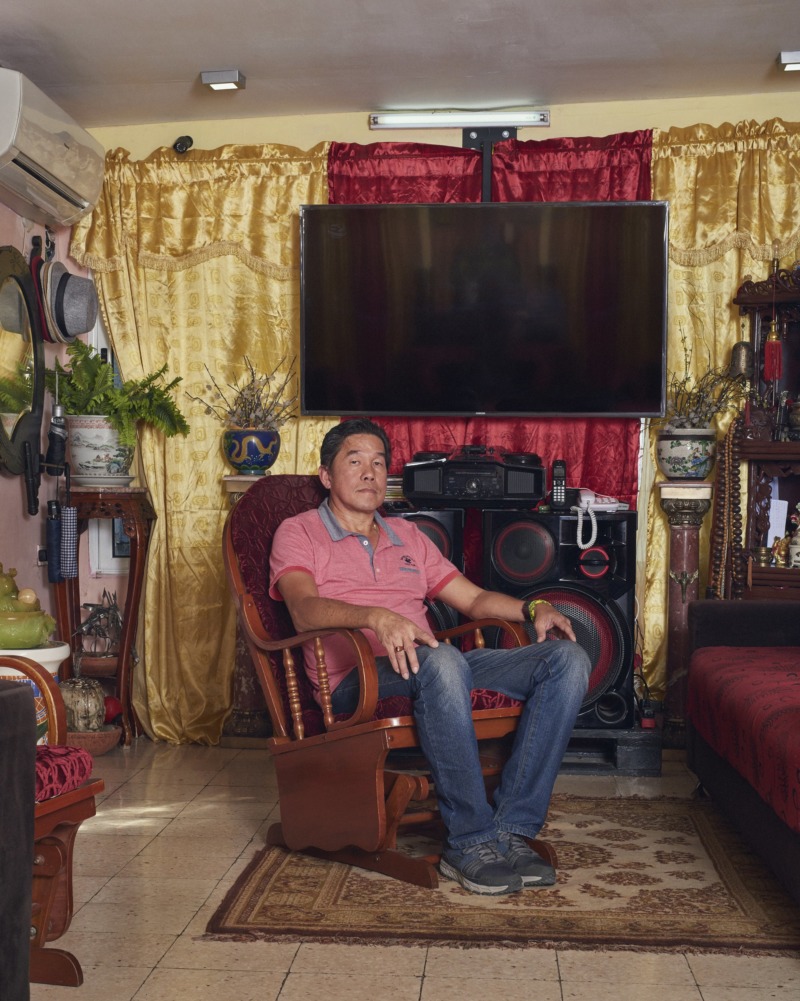
But for you, at least, it’s not just about the pictures, you’re not rushing in and taking stuff for your own benefit, it’s about the people and the story behind it.
Yeah, what I like is everything that’s behind the picture. Photography is a great medium, but it’s also very poor in a way, because it doesn’t embody many other aspects of the relationship; compared to video or writing, there’s only so much a picture can tell so there’s a whole narrative missing. If you shoot a guy sat on a chair, you can’t tell from a photograph if he has cancer or not. I get drawn into certain subjects or the process of certain things, and it’s much more interesting than the actual picture. A lot of the time the picture, I suppose, is a bit disappointing. I’m always drawn into what’s behind the image. That’s why now, I’ll be incorporating more interviews and text into the book, because I feel that the pictures are fifty per cent and that the story behind is as important.
I was always very interested in this fact that because there’s very little travel between Cuba and China, a lot of these cultural artefacts are moved through intermediaries.
Yes, a lot is smuggled. A lot of these people have never been to China, and they never will because the average income is $20 and it would take a lifetime to save enough money to go. It’s a false idea that Cubans aren’t allowed to travel, they actually can but you just have to have the right connections with the administration. There’s a huge waiting list’ it’s a bit like applying for a council house in London, it’s a very slow administrative process.
Because of the American embargo, everything has to be smuggled in. Everything has a huge value for them. Cuban customs are very strict in so it’s a huge effort. Every time people travel they bring stuff to the black market; phones, clothes, whatever.
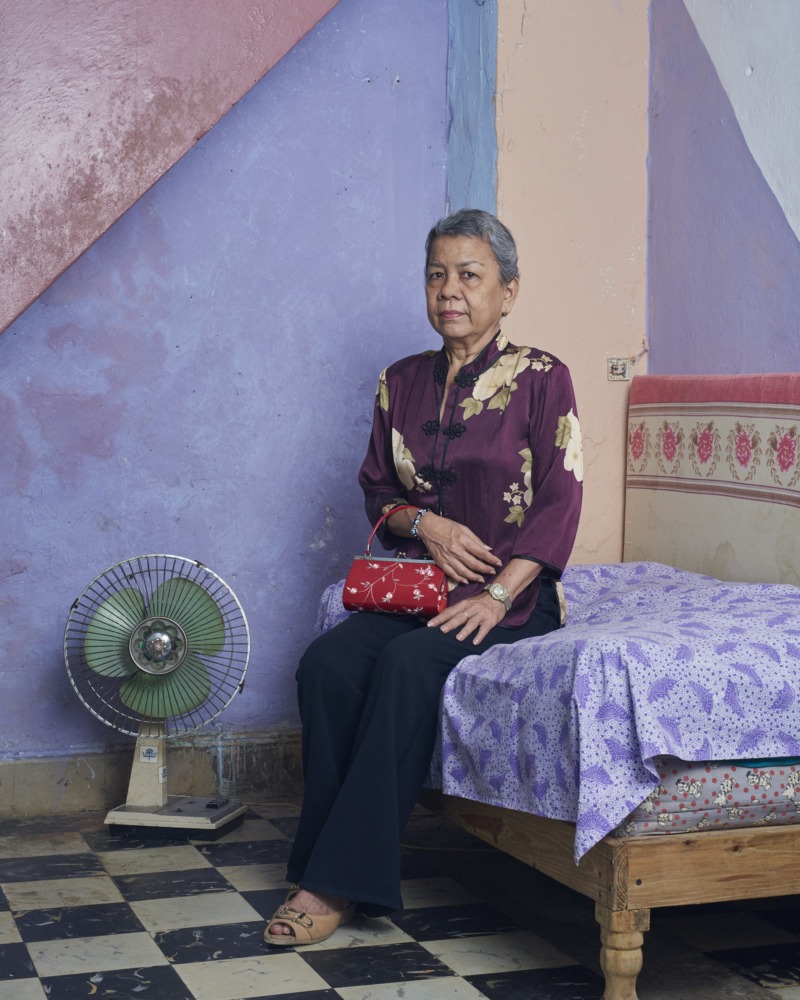
So when you’re depicting these people they’re often surrounded by precious possessions and things connecting them to China.
For instance, one subject I photographed wanted to show me her best clothes, handbags and shoes. She’s wearing a traditional Chinese dress and it’s very valuable to her because it’s the only possession she has. My work is very interested in location and interior design, this is what attracted me to Barrio Chino; they’re trying to recreate China abroad and an environment they’ve never been to.
What are you looking for between a person and a location?
I think for me they go hand in hand. I’ve had lots of people say in feedback, ‘we see the location but don’t see the model’; to me, it makes so much sense that the location is the extension to the subject. A lot of photographers use it as a backdrop; it’s just a place to shoot, it doesn’t really matter. But for me, it’s the opposite. A lot of people use a shallow depth of field, but with me everything is sharp. I shoot the actual location as it is. And I did the same with Cuba.
There were times where the subject was interesting but the location wasn’t. I think the location’s everything. All the work I reference is old school portrait photography. If there’s one thing that influences me it’s the systematic approach to your subject, where the subject is important but not as much on their own as part of a series. I love August Sander and Tina Barney, that kind of portrait-based documentary photography.
It’s strange because they’re building their identity on things that many people might see as cliches or stereotypes, so they have dragons and fans, painted mountains and temples, but to them, this is more real than real.
They’re trying to create something that doesn’t exist. I mean, Cuba is not ‘Chinese’ at all, but they make it happen. It’s the case with all the Chinatowns around the world, it’s a small ‘China’ in a foreign city. There’s an artist who creates impressionist style Chinese scroll paintings. He’s never seen a real scroll painting so he paints from online images and books and reproduces his own versions. He’s the guy who makes the art for the public places in Barrio Chino.
So how did you begin to approach this particular community and photograph them, because as much as they’re making a connection with people outside the community, to take a photograph you’ve got to go into people’s homes and other relatively private spaces.
That was difficult, to be honest. When we arrived we had no plans, we’d been sending emails to the embassies and institutes beforehand but nobody replied, so the first few days we went to places in person to talk to them, but nobody got back to us, they thought we were tourists who just wanted to take pictures. I thought the project would go nowhere, I thought it was a huge mistake. Then we met some students from the cinematic university, and we hung out with them and they helped us to meet people, they made it look more legitimate, and once we had one or two portraits – I had a little printer with me and I would make them and bring them back the next day – it was official, and all of a sudden everyone was open and helpful, and one portrait would bring another, and so on. It was almost the opposite, we’d be stuck in people’s houses chatting for hours and they wouldn’t let us leave until we’d eaten and drank!
You ended up photographing a wide range of people, from the older people to younger kids, particularly at the martial arts centre. What does this varied selection tell you about keeping the culture alive?
The idea was to try and represent the culture in its entirety. Obviously, it’s not just Chinese fast food and restaurants, there’s a lot more to it in Barrio Chino. The idea was to show everything they use to keep traditions alive. So they do the mahjong course, they do Chinese language courses, there’s Wushu, Tai Chi, and Kung Fu. They make books and show films. In a lot of places, there are many non-Chinese people who go there. They make it accessible, and they’re not just trying to preserve but also to share, and they encourage people to access their side of the culture. Next time, for instance, I really want to shoot more of the younger generation and get a wider sample of the community.
Of course, because despite the fact you’ve published your pictures about and you’re planning a book, it’s an ongoing project.
Yes, I’m going back in September. I might come back with two pictures, I might come back with five hundred, so it’s hard to imagine what’s going to happen. I’ve made some small dummies, so I’ll take those to show the people what I’m working on.
There are many academics I’d like to meet to get more information and texts from. There are three or four women who have dedicated literally their entire lives to Chinese people in Cuba. There’s a lot happening now because in five or six years a lot of people won’t be there any more. There’s definitely a sense of urgency. Also, Cuba is changing a lot, Barrio Chino is changing, many other things are too.
What exactly is changing?
Well, it’s a sad thing, Barrio Chino is a tiny barrio, the original Chinatown was six times bigger and, basically, the government are redeveloping the main strip of Chinese restaurants because it’s good for tourism and they take a huge cut from tourism. So, all the fancy places are subsidised but many smaller, older restaurants, and many of the small societies outside the main strip won’t get anything and they’re already closing one by one. So what’s going to happen is the cheesy tourist trap Chinatown is going to survive but the real one is slowly dying. There’s one traditional Chinese medicine shop that’s left, but even that’s going to close. There are many other places in the world where this is happening, it’s not just Cuba.
